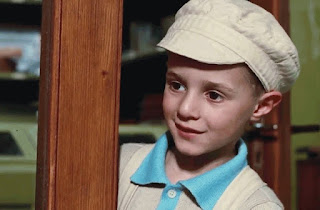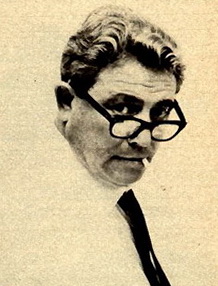Child star of Oscar-winning Life Is Beautiful
 |
| Cantarini's performance as Roberto Benigni's son in Life Is Beautiful captivated cinema audiences |
Cantarini was cast as Giosuè, the four-year-old son of Roberto Benigni’s character, Guido, in the 1997 film, which brought Academy Awards for Benigni as Best Actor and, as the director, for Best Foreign Film. For his own part, Cantarini was rewarded for a captivating performance in the poignant story with a Young Artist award.
Three years later, in Ridley Scott’s Oscar-winning blockbuster Gladiator, Cantarini was given another coveted part as the son of Russell Crowe’s character, Maximus.
Born to parents who separated soon after his fifth birthday, Cantarini went to an audition for the part of Giosuè after an uncle read a description in a newspaper article of the kind of child Benigni wanted and told him he was a perfect match.
 |
| Cantarini remains a close friend of the director Roberto Benigni (above) |
Despite the success of Life Is Beautiful and Gladiator, and the acclaim he received, Cantarini went back to school with no thought of becoming an actor when he grew up. His ambition was to become a footballer. Once he was in high school, however, his friends and teachers convinced him he should not let his acting talent go to waste.
After appearing in a small number of films and tv dramas - plus an appearance on the the popular tv show Ballando con le Stelle - he joined hundreds of hopefuls in applying for a place at the prestigious Centro Sperimentale di Cinematografia - the national film school - in Rome and to his surprise and delight was accepted as one of just six boys and six girls to be admitted in 2012.
After graduation, he was immediately cast in the lead role of AUS- adotta uno studente - Adopt a Student - the first online-only series produced by Rai.
Following a period working in Paris, he returned to Italy in 2016 to perform, direct and produce Harold Pinter's play The Dumb Waiter for theatres in Rome and Vicenza, in collaboration with his friend and colleague, Miguel Gobbo Diaz.
 |
| Giorgio Cantarini today |
At the beginning of 2018 he moved to New York to study at the New York Film Academy and later in the year was selected for the cast of Lamborghini - the Legend, directed by Bobby Moresco, filmed in Italy and starring Antonio Banderas and Alec Baldwin.
Cantarini’s home in Italy is in Viterbo in Lazio, where his mother and brother Lorenzo live. He remains in touch with Roberto Benigni, who provided a reference for his application for a visa to work in the United States.
Travel tip:
Orvieto, where Cantarini was born, is a small city in Umbria with a population of just 20,000, built on the top of a cliff of volcanic tuff stone. Surrounded by defensive walls built by the Etruscans, it makes an imposing sight. Situated about 120km (75 miles) north of Rome, it boasts one of Italy’s finest cathedrals in Italy - the Cattedrale di Santa Maria Assunta - with a stunningly beautiful Romanesque Gothic facade inlaid with gold mosaics fronting a building constructed from alternate layers of black and white marble. The city’s medieval streets are known as a cultural paradise - busy with cafés and restaurants, bookshops, artisans' workshops and antique emporia.
Travel tip:
Viterbo, where Cantarini now lives when in Italy, is the largest town in northern Lazio, situated about 80km (50 miles) north of Rome. It is regarded as one of the best preserved medieval towns in Italy, with many buildings in the San Pellegrino quarter featuring external staircases. The town’s impressive Palazzo dei Papi, was used as the papal palace for about 20 years during the 13th century. Completed in about 1266, the palace has a large audience hall, which connects with a loggia raised above street level by a barrel vault.
More reading:
How Life Is Beautiful turned Roberto Benigni into a household name
Dino De Laurentiis – the Campanian pasta seller helped make Italian cinema famous
The brilliance of Life Is Beautiful cinematographer Tonino Delli Colli
Also on this day:
1710: The birth of the famed castrato opera singer Caffarelli
1948: The birth of World Cup-winning coach Marcello Lippi
1950: The birth of controversial entrepreneur Flavio Briatore
Home



